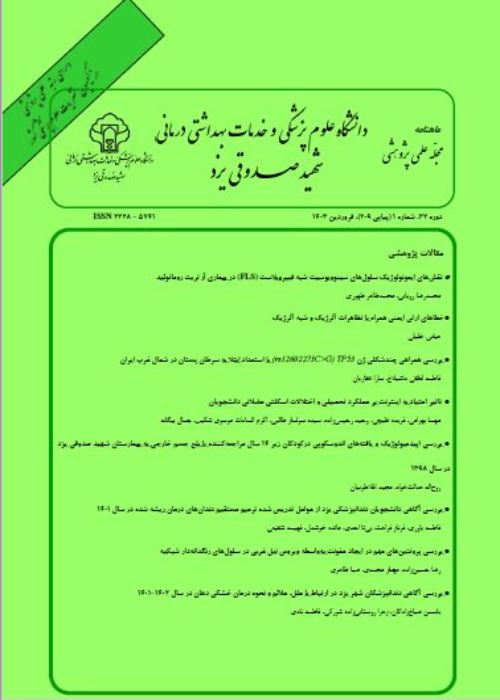In Vitro Comparison of the Accuracy of Primax, Insight Dental X-Ray Films and CMOS-APS Digital Imaging in Detection of Interproximal Caries
Author(s):
Abstract:
Introduction
Radiography is one of the most important diagnostic methods for evaluation of dental caries. On the other hand, the least amount of radiation along with high quality is a main gold standard. The purpose of this study was to compare the diagnostic accuracy of Primax, Insight Radiographic films, and direct digital images (Schick CMOS-APS), in detection of interproximal natural Caries. Methods
In this experimental invitro study, 208 extracted permanent molars and premolars were selected for study on the basis of varying caries depth. Exposure factors considered for conventional films and digital images were 70 Kvp and 8 mA, and exposure times for each of the three modalities were in the following order 0.20 s for Primax, 0.16 s for Insight and 0.08 s for digital images. All film types were subsequently automatically processed. The conventional radiographs and digital images were examined by five observers. They were asked to detect caries in the approximal surfaces. They had to indicate their certainty of decision separately for each interproximal side of each tooth on a 5-point confidence scale. Following acquisition of the image modalities, the teeth were sectioned mesiodistally along the long axis of the crowns. Sectioned teeth were evaluated for the absence or presence of approximal carious lesions as Gold Standard. Inter-observer agreement in detecting approximal caries, for each image using Kappa Value, was evaluated. Then sensitivity value, specificity value and the areas (Az) beneath Receiver operating characteristic (ROC) curves were calculated.Results
A slight (k=0.01) inter-observer agreement was observed in comparison of Gold Standard. The sensitivity value of Primax was higher as compared to both Insight and digital images. Although the Az value indicated an overall better performance of Primax(0.64) as compared to both Insight(0.63) and digital images(0.61), all three modalities showed a trend of increasing sensitivity for deeper lesions. Results indicated no significant difference between the diagnostic accuracies of three imaging modalities in the detection of approximal carious lesions (p= 0.18). However, analysis of the diagnostic accuracy of three imaging modalities in the detection of degree of carious lesion was significant. (p=0.02).which indicated the superior performance of dental films as compared to digital images. Conclusion
All three performed modalities are poorl in the detection of enamel lesions. Considering limitations of this study, it is proposed that insight film and digital images should be endorsed for clinical use, especially since radiation exposure is reduced.Keywords:
Language:
Persian
Published:
Journal of Shaeed Sdoughi University of Medical Sciences Yazd, Volume:16 Issue: 4, 2009
Page:
33
magiran.com/p602531
دانلود و مطالعه متن این مقاله با یکی از روشهای زیر امکان پذیر است:
اشتراک شخصی
با عضویت و پرداخت آنلاین حق اشتراک یکساله به مبلغ 1,390,000ريال میتوانید 70 عنوان مطلب دانلود کنید!
اشتراک سازمانی
به کتابخانه دانشگاه یا محل کار خود پیشنهاد کنید تا اشتراک سازمانی این پایگاه را برای دسترسی نامحدود همه کاربران به متن مطالب تهیه نمایند!
توجه!
- حق عضویت دریافتی صرف حمایت از نشریات عضو و نگهداری، تکمیل و توسعه مگیران میشود.
- پرداخت حق اشتراک و دانلود مقالات اجازه بازنشر آن در سایر رسانههای چاپی و دیجیتال را به کاربر نمیدهد.
In order to view content subscription is required
Personal subscription
Subscribe magiran.com for 70 € euros via PayPal and download 70 articles during a year.
Organization subscription
Please contact us to subscribe your university or library for unlimited access!


